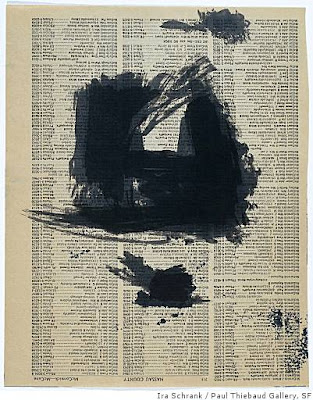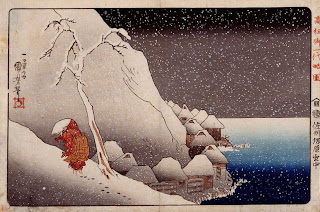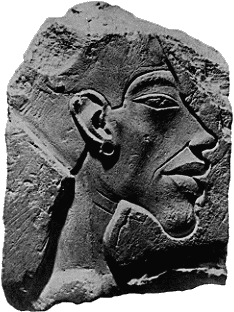Tuesday, December 30, 2008
Ring in the New Year - Japanese Style
Wednesday, December 31, 2008
FREE with museum admission
Children 12 and under always admitted free!
10:00 am–2:00 pm: Art Activities
11:30 am: Bell Ringing Ceremony
Everyone is invited to participate in the auspicious Japanese tradition of striking a temple bell. This popular event offers the community a memorable opportunity to reflect peacefully upon the passing year.
As in past observances, a 2100-lb., sixteenth-century Japanese bronze bell originally from a temple in Tajima Province in Japan and now part of the museum's permanent collection will be struck 108 times with a large custom-hewn log. According to Japanese custom, this symbolically welcomes the New Year and curbs the 108 bonno (mortal desires) which, according to Buddhist belief, torment humankind.
It is hoped that with each reverberation the bad experiences, wrong deeds, and ill luck of the past year will be wiped away. Thus, tolling heralds the start of a joyous, fresh New Year.
Thursday, December 25, 2008
Totoro Forest Project at Cartoon Art Museum, San Francisco

Now through February 8, 2009 the show “Totoro Forest Project” is on display at the Cartoon Art Museum in San Francisco. The show features paintings, drawings, digital art and sculpture from the Totoro Forest Project charity auction. The work, created by a large number of artists was inspired by Miyazaki’s film “My Neighbor Totoro” and auctioned on September 6th at the Pixar Studios. The auction sales support the Totoro No Furusato National Fund, a non-profit organization working to protect Japan’s Sayama Forest, an urban forest outside of Tokyo. It is said this forest was Miyazaki’s inspiration for the film “My Neighbor Totoro”. The organization that Miyazaki helped to set up is working to preserve the park and promote environmental issues.
I really enjoyed the variety of work in this show. Most of it was excellently crafted. From oil painting to soft sculpture I was inspired by the playful, magical, environmental and naturalistic theme. Some of the paintings were so traditional I wondered what they were doing in the exhibit - until I saw a small Totoro creature peeking out behind a tree. Others were excellent examples of illustration, both with traditional and digital materials.
If you haven’t seen the film: “My Neighbor Totoro” by master animation artist Hayao Miyazaki is one of my favorite movies of all time. The film is about a young Japanese girl and her sister who move to the country with their parents. They soon discover they are not alone in the quiet rural land and meet the forest spirit called Totoro that can only be seen by children. The film is filled with magical characters and forest scenes. Dakota Fanning does the voice in the English version. It is rated G.
 Images borrowed from Cartoon Art Museum of San Francisco http://www.cartoonart.org/
Images borrowed from Cartoon Art Museum of San Francisco http://www.cartoonart.org/and the Hayao Miyazaki website http://www.nausicaa.net/miyazaki/
Also, please visit http://www.totoroforestproject.org for a more information on the non-profit and a preview of images from the show.
Wednesday, December 24, 2008
Monday, December 22, 2008
Franz Kline at Thiebaud in North Beach
 This small but marvelous exhibit shows the roots of Kline's larger black and white paintings. The father of black and white painting came from a background that was as grim as any in Dickens'. Orphaned as a boy, a poor student, crippled by a bout with rheumatic fever which caused his early death, he led a brutal, hardscrabble life for years. His breakthough came in 1950 with a show at the Egan Galley of the work for which we now know him for -the stark, dynamic and large scale dramatic paintings. These small spontaneous pieces on old phone books - given to Thiebaud as a gift - encapsulate in minature that raw force. Franz Kline once said, "If you meant it that much when you did it, it will mean that much."
This small but marvelous exhibit shows the roots of Kline's larger black and white paintings. The father of black and white painting came from a background that was as grim as any in Dickens'. Orphaned as a boy, a poor student, crippled by a bout with rheumatic fever which caused his early death, he led a brutal, hardscrabble life for years. His breakthough came in 1950 with a show at the Egan Galley of the work for which we now know him for -the stark, dynamic and large scale dramatic paintings. These small spontaneous pieces on old phone books - given to Thiebaud as a gift - encapsulate in minature that raw force. Franz Kline once said, "If you meant it that much when you did it, it will mean that much."Yes, it does still mean that much.
http://www.sfgate.com/cgi-bin/article.cgi?f=/c/a/2008/12/15/DDC614NB5A.DTL&type=art
April Kingsley, "The Turning Point." p. 372
Roland Petersen at Hacket-Freeman

Semi-abstract backgrounds intermingled with geometric forms, all slathered with thick paint like icing. As a painter, I found myself wondering whether he used any mediums to thicken his paint; as a critic, I was seduced by his clean bright colors and skillful handling of landscape and figuration.
A rare selection of early paintings and works on paper by Roland Petersen.
To December 24th. at Hackett-FreedmanFriday, December 19, 2008
Umbrella Shuts Down

Umbrella was one of the best alternate book publications out there - either on line or off. But the sad news came through the Book-Arts mailing list; the editor has cancer and has gone to a hospice to wait for the end. I'm am stricken by this news; Judith was one of the first to publish my altered books, had the most interesting mail art shows, the best reviews and an editorial eye that seldom made a mistake. The whole archive is now up on line and when you go there, send a prayer of gratitude to Judith for all her hard work in the arts for the last 31 years. Instead of locking down her website, she's offering the archive up as a free resource. May her passing be peaceful and pain-free.
From the Editor
To my subscribers, institutions, collectors, artists, friends:
One would not have imagined a disease chasing me down the end of the road, but it happened in August, diagnosed in September, analyses were done by experts, and I came home on the first of October to hospice at my home. To say that I was in a state of shock would be a euphemism. It all came too fast.
As soon as I walked into the house, my life completely changed. I was no longer a writer, editor, publisher, traveler, choc-o-holic, insomniac; I was a cancer patient. I have acute myeloid leukemia. And in the interim between October 1st and as I write this, I have been organizing my archives, throwing things away I never would have otherwise, and preparing myself for the last journey. This is the most difficult editorial I’ve ever written to you, and it will be my last.
In the past, you have learned about alternative spaces all over the world, itineraries of trips that I have taken that have led me to exotic and creative places. You never bargained about learning about Fluxus, mail art and archives, video art, sound art, performance art, rubber stamps, and so much more that was fecund in those early years.
Frankly, it took a lot of work, a lot of reading, a lot of traveling, but the task was as fruitful for me as it was for you. With the technology we went from Composer I to Composer II, to computer. It was a learning curve for me, but I always wanted Umbrella to “look good.” When you saw that light blue issue in the mail, you knew what it was. The whole field of artist books became my life and I wanted to share it with all of you. Although marginal at the beginning, it has grown into a movement, a new chapter in art history, one which is recognized by art historians, artists, and all of you. It has become almost too much now, with so many conferences, book fairs, and symposia to attend. And as usual, it has spread globally.
Obsessed with umbrellas and parasols, it allowed me to create a huge collection of “umbrelliana” which has overwhelmed both my domestic and storage settings. I learned more about textiles, fashion, kitsch, marketing, performance art, multicultural innovations with the object umbrella, encountering artists who used the image to intrigue me as well as to whet my appetite. It has been an easy image to collect in paper ephemera as well as almost 200 three-dimensional umbrella objects. From a tiny Chinese lace umbrella to a 19th century silk parasol, from 333 antiquarian books to countless artifacts, the collection has grown over the past 30 years.
In the ensuing two months I have been in hospice, I have missed sharing with you all the art news, umbrella news, and mail art news for this issue. With this issue I say goodbye, knowing full well that you can always read back issues, do database research in all the issues from vol.1 no. 1, with Umbrella being a free journal for all to read, from 1978 through 2008. This has been made possible for posterity thanks to Indiana University and Sonja Staum-Kuniej at IUPUI.
It is with heartfelt thanks that I recognize all the contributors, even those who sent just snippets of information that I could use for the next issue. Interviews with intriguing artists have been Googled as number one under the artist’s name. Perhaps that is because I chose obscure artists, but why not? And we went from no covers to spectacularly beautiful color covers as the technology allowed us. The printers took extreme care in making Umbrella a handsome and readable publication. No less gratitude is due webmaster, Jim Hanson, who made the electronic issue of Umbrella clear and well-designed transition to the new technology.
Through the years, from the beginning, I have depended upon all the libraries, colleges and universities, public libraries, private collectors, museums, and galleries that supported me in this 31-year endeavor. But it is also the artists, friends, and colleagues, who have allowed me to produce Umbrella. Without you, it could not have happened.
— jah
Friday, December 12, 2008
Support the arts
Nationally: DonorsChoose.org
Teachers ask for classroom project materials.
You choose a project to bring to life.
Students learn and thank you with letters and photos.
DonorsChoose.org is a simple way to provide students in need with resources that our public schools often lack. At this not-for-profit web site, teachers submit project proposals for materials or experiences their students need to learn. These ideas become classroom reality when concerned individuals, whom we call Citizen Philanthropists, choose projects to fund.
Proposals range from "Magical Math Centers" ($200) to "Big Book Bonanza" ($320), to "Cooking Across the Curriculum" ($1,100). Any individual can search such proposals by areas of interest, learn about classroom needs, and choose to fund the project(s) they find most compelling. In completing a project, donors receive a feedback package of student photos and thank-you notes, and a teacher impact letter.
http://www.donorschoose.org/homepage/main.html?zone=0
Locally: Holiday Fair at SF Center for the Book
Fri Dec 12 6pm-8pm - Sat Dec 13 12pm-5pm
Do your holiday shopping at the Center. We'll have gifts for sale by a wide variety of printers, bookbinders, book artists, and other craftspeople, as well as 2009 calendars from members of the Pacific Center for the Book Arts. Browse the artist's books and journals, handmade and decorative papers, calligraphy and book making supplies, holiday cards, and lots more. See below for a list of participating vendors. Vendor tables are sold out for this event.
http://sfcb.org/index.php
From Greg Dewar's N-Judah Chronicles: Holiday Bazaar
Earlier they had a fun "Summer Solstice" celebration, and now, for the holidays, they are hosting an "Underground Bazaar" with crafts made by local artisans on Sunday, December 14th, from noon to 5pm.
Not only can you find some potentially fun handmade items to give away for the holidays, you can also meet some of your neighbors and enjoy a fun Sunday afternoon in the neighborhood. Here are the details:Underground Bazaar December 12th from 12pm to 5pm
25+ Talented Artisans offering their Personal, Hand-Made Treasures!
Pillows, Clothing, Jewelry, Toys, Notebooks, Painted Shoes,
Note Cards, Soaps, Wall Art, Accessories, Candles ... ALL hand made!
*NO charge to attend*
Complimentary Mulled Wine, Hot Chocolate & Cookies
http://www.njudahchronicles.com/
Wednesday, December 10, 2008
More from the Simon Collection at the Legion

This should be a "must see" for the holidays. The show compasses two millennia and three continents in a few small rooms. Each piece is not only exquisite but historically important. The show features about 150 works, ranging from ancient Mesopotamia to 19th century France. This is only a small selection the collection which is going to be housed in a new museum on Berlin's "Museum Island" later in the decade.
 The Priest Nichiren in the Snow on Sado Island, from the Life History of Nichiren Series, by Utagawa Kuniyoshi––the majority of James Simon’s Eastern art collection was lost at the end of World War II. Happily, the collection of Ukiyo-e was saved and remains in Berlin. This woodblock print, circa 1831, reveals Kuniyoshi’s brilliant sense of color and design and is one of a series of ten prints created in honor of activist priest Nichiren.
The Priest Nichiren in the Snow on Sado Island, from the Life History of Nichiren Series, by Utagawa Kuniyoshi––the majority of James Simon’s Eastern art collection was lost at the end of World War II. Happily, the collection of Ukiyo-e was saved and remains in Berlin. This woodblock print, circa 1831, reveals Kuniyoshi’s brilliant sense of color and design and is one of a series of ten prints created in honor of activist priest Nichiren.
The Gold Medallion with Portrait of Alexander the Great (3rd Century A.D.) was part of a rich treasure trove uncovered by archaeologists northeast of Alexandria in 1902. The circular pendant portrays the Hellenistic ruler Alexander the Great (r. 336-323 B.C.) brandishing a spear and protective shield.

 Queen Tiye, the mother of Akhnaton. The reproduction does not do justice to this piece. It's about the size of my thumb but carved with astonishingly realistic detail. Unlike other periods of Egyptian art, the Amarna period allowed artists to individualize their portraits beyond the canon and in this tiny but powerful piece, the Queen's forceful personality still speaks across the intervening centuries. The original bust of Nefertiti is too fragile to handle but the replica is beautifully done. The show has an even more haunting piece on display - an incomplete limestone bust from the workshop of one of the sculptors of the court.
Queen Tiye, the mother of Akhnaton. The reproduction does not do justice to this piece. It's about the size of my thumb but carved with astonishingly realistic detail. Unlike other periods of Egyptian art, the Amarna period allowed artists to individualize their portraits beyond the canon and in this tiny but powerful piece, the Queen's forceful personality still speaks across the intervening centuries. The original bust of Nefertiti is too fragile to handle but the replica is beautifully done. The show has an even more haunting piece on display - an incomplete limestone bust from the workshop of one of the sculptors of the court.
Eduard and James, who made their fortunes as cotton purveyors, gave one-third of their sizable annual income to charity, supporting both social causes and the museums of their city. In all, they gave about 20,000 objects to the State Museums of Berlin, among them important ancient artifacts from excavations that James supported in Egypt and Babylon.
James Simon also played a key role in developing Berlin’s museum landscape. He had a close relationship with Wilhelm von Bode, the museum director largely responsible for bringing the museums of the German capital to a position of worldwide eminence. To raise Berlin to the level where it could compete with museum centers like Paris and London, Bode systematically used a combination of public funding and the generosity of private patrons, many of whom were prominent Jewish art collectors.
In 1916, Simon approached Bode again and said he wanted to donate his entire collection. Simon’s second endowment, which he completed in 1920, was a rare event. In the tumultuous period following the war, few patrons were willing to part with as much of their art as he was. James Simon, who was a patriotic German as well as a Jew, died in 1932, a year before Adolf Hitler came to power. Simon belonged to Prussia’s Jewish community which was destroyed by the Nazis. In addition to its incalculable human cost, the Holocaust also obliterated knowledge of the key role Jews played in establishing Germany as a cultured nation.
All in all, he gave the Berlin Museum over 20,000 pieces and thankfully for us, most of it survived both the Nazi "purge" of anything they deemed Jewish and the violence of WW II.
Thanks to James Simon, the Berlin Egyptian museum has one of the world's richest collections of ancient Egyptian art from Tell el Amarna, and the Pergamon Museum in Berlin has a world-famous reconstruction of the Babylonian Ishtar Gate and its processional way. In addition to the model for the bust of Nefertiti, the Legion of Honor show includes clay brick fragments assembled into the form of lions that led the way to the Ishtar gate. It's hard to believe that this was the work of one individual. His generosity and insight into saving the art of the past have given all of us a priceless gift.
References: Sacramento Bee, 11/28/2008
Atlantic Times, December 2006
SF Sentinel, Nov 2008
http://www.artdaily.org/index.asp?int_sec=2&int_new=27541
http://specialartgalleryexhibits.suite101.com/article.cfm/berlin_museums_legacy_of_james_simon_exhibit
Wednesday, December 3, 2008
Leonardo and Mantegna at the Legion

It's not often that we have two exhibits of this quality in the same place and at the same time.
Leonardo da Vinci’s drawings form the heart of the Renaissance master’s artistic legacy and continue to fascinate and challenge viewers today. A select group of eleven drawings, as well as one of his most celebrated notebooks, the Codex on the Flight of Birds, is on view at the Legion of Honor from November 15, 2008, to January 4, 2009. Previously exhibited at the Birmingham Museum of Art, Leonardo da Vinci: Drawings from the Biblioteca Reale in Turin, marks the first time that this remarkable group of drawings has been loaned to a U.S. exhibition by the Biblioteca Reale (Royal Library) in Turin, Italy. This small-scale traveling exhibition presents the first opportunity to view these drawings together, outside of Italy. (from the press release)
"The shadow of a great genius is a peculiar thing. Under Rembrandt's shadow, painters flourished to the extent that we can no longer distinguish their work from his own. But Leonardo's was a chilling shadow, too deep, too dark, too overpowering." (Sister Wendy Beckett).
The exhibit of drawings is small but exquisite and a reminder - if we needed reminding - why his work is still looked at today with equal parts of appreciation and reverence. To study his delicate but sure line line, his luminous faces, even the way the most casual sketch is positioned on the paper is worth a year of graduate work in the most prestigious art school.
 This other exhibition honors the cultural legacy of James Simon, perhaps the most important patron Berlin has ever known. Over 100 works, borrowed from nine separate museums, spanning from the 3rd millennium BC to the 18th century AD, grace the special exhibition galleries at the Legion of Honor from October 18, 2008, to January 18, 2009. Highlights include the Egyptian, New Kingdom bust Queen Tiy, a lion relief that once lined the Processional Way in ancient Babylon, Andrea Mantegna’s The Virgin with the Sleeping Child, and a 19th-century woodblock print by the great Ukiyo-e master Utagawa Kuniyoshi titled The Priest Nichiren in the Snow on Sado Island.
This other exhibition honors the cultural legacy of James Simon, perhaps the most important patron Berlin has ever known. Over 100 works, borrowed from nine separate museums, spanning from the 3rd millennium BC to the 18th century AD, grace the special exhibition galleries at the Legion of Honor from October 18, 2008, to January 18, 2009. Highlights include the Egyptian, New Kingdom bust Queen Tiy, a lion relief that once lined the Processional Way in ancient Babylon, Andrea Mantegna’s The Virgin with the Sleeping Child, and a 19th-century woodblock print by the great Ukiyo-e master Utagawa Kuniyoshi titled The Priest Nichiren in the Snow on Sado Island.The The State Museums of Berlin and the Legacy of James Simon
October 18, 2008 — January 18, 2009
Leonardo through January 4th, 2009
SF Legion of Honor
http://www.famsf.org




